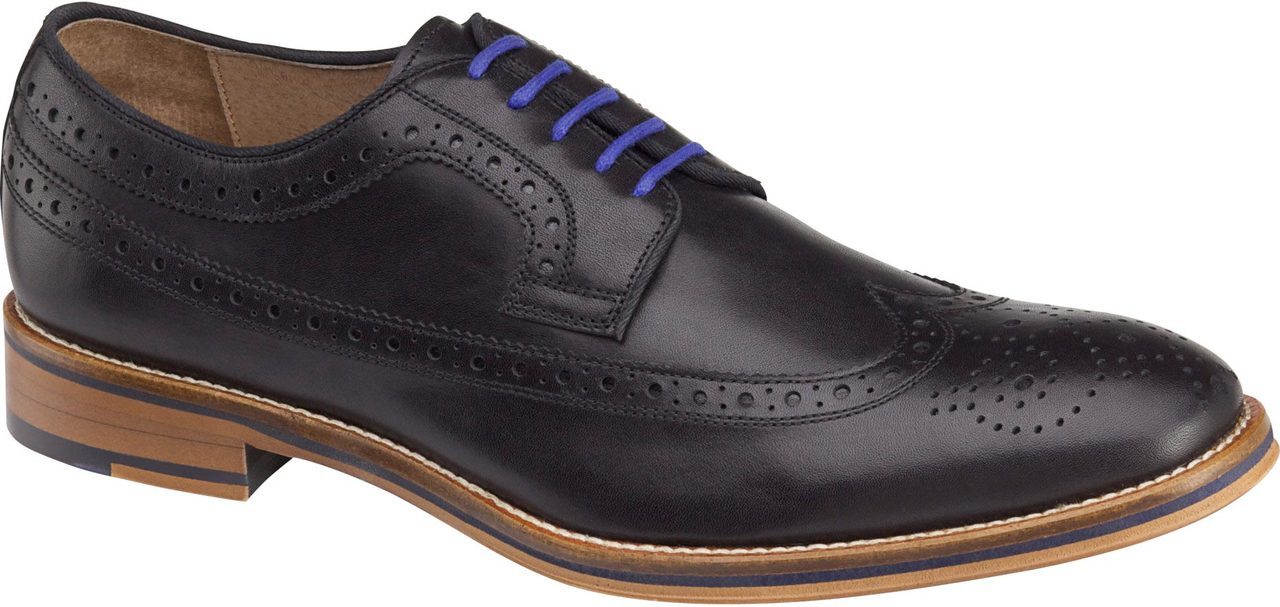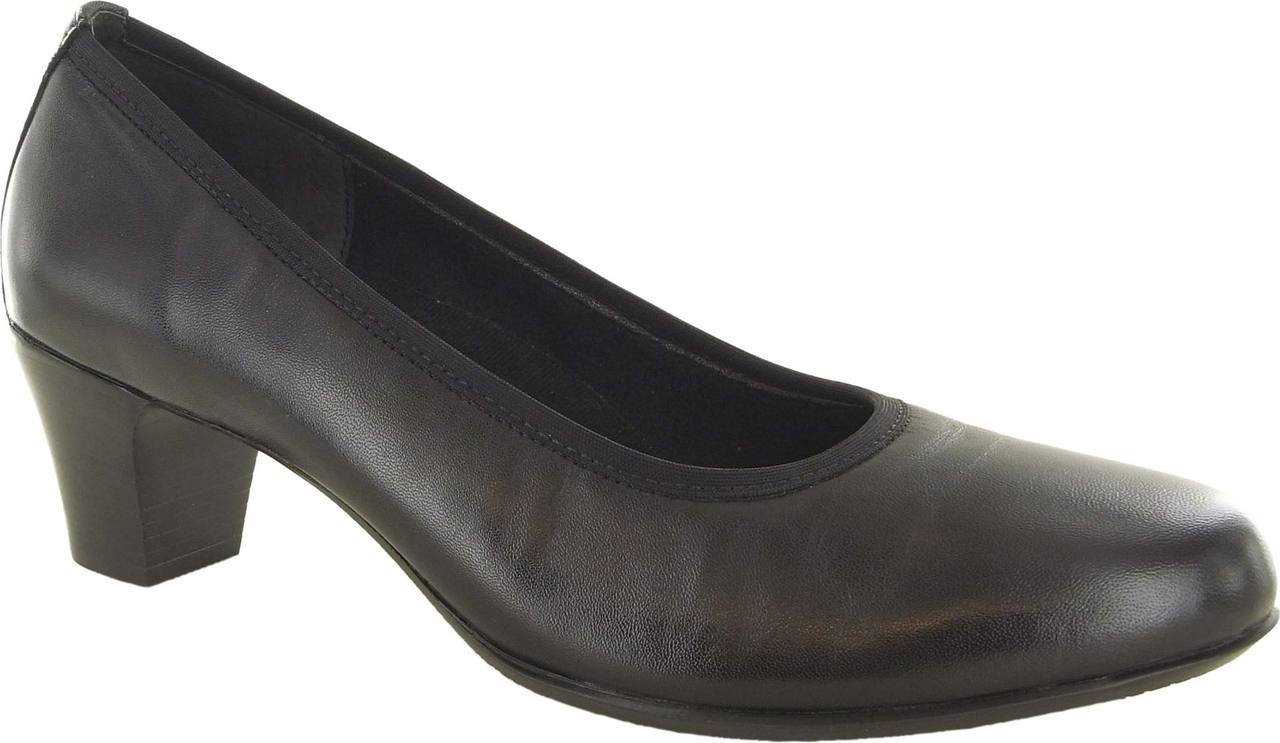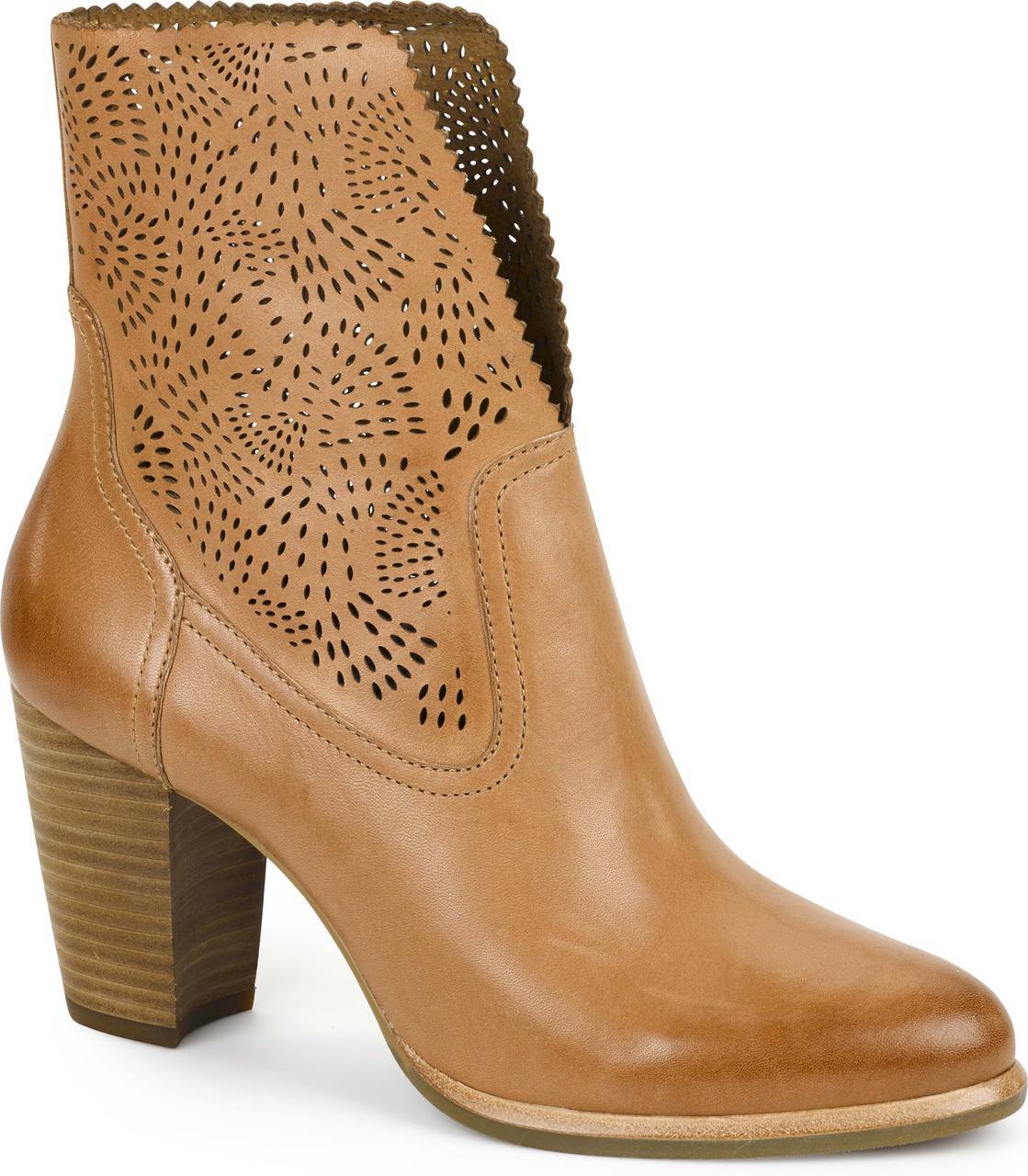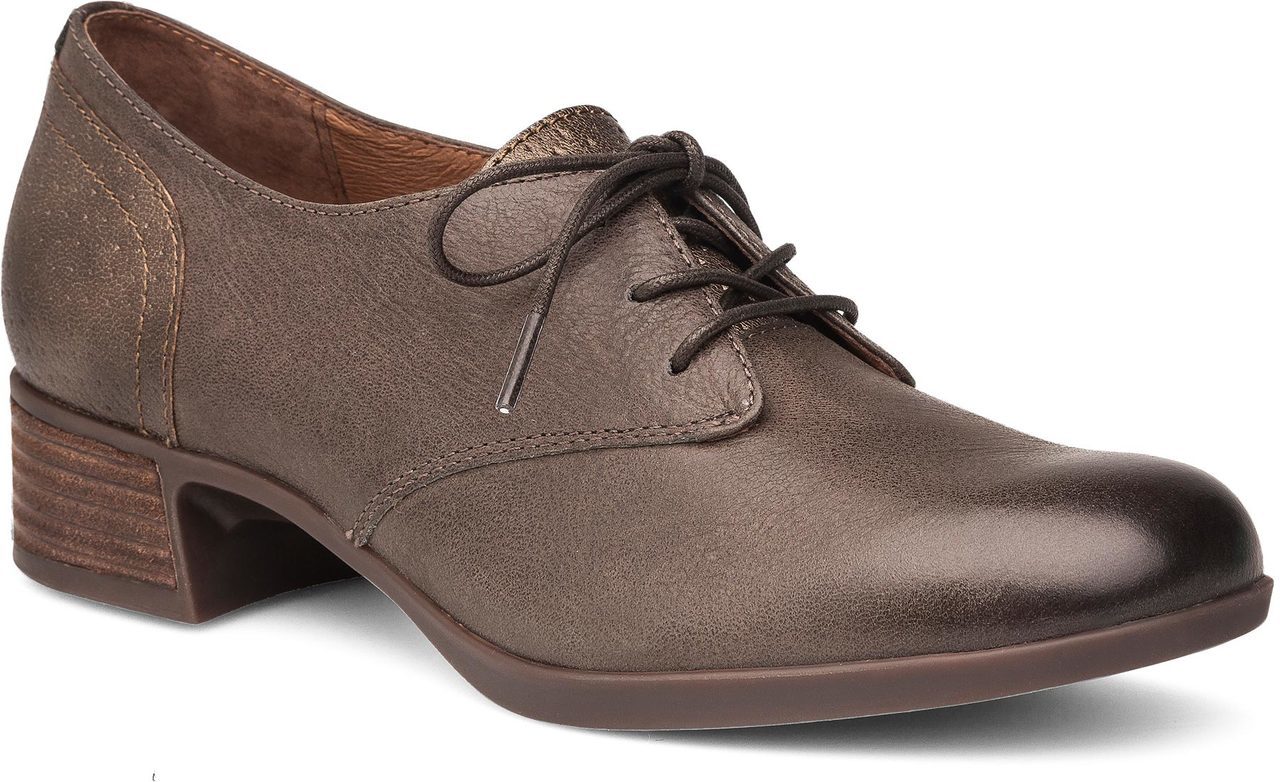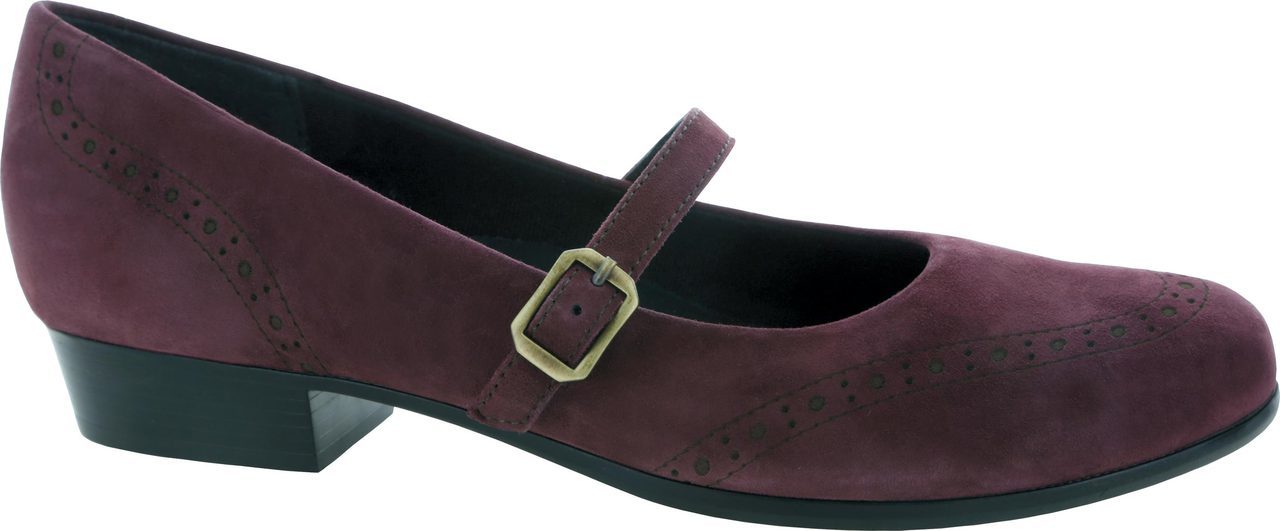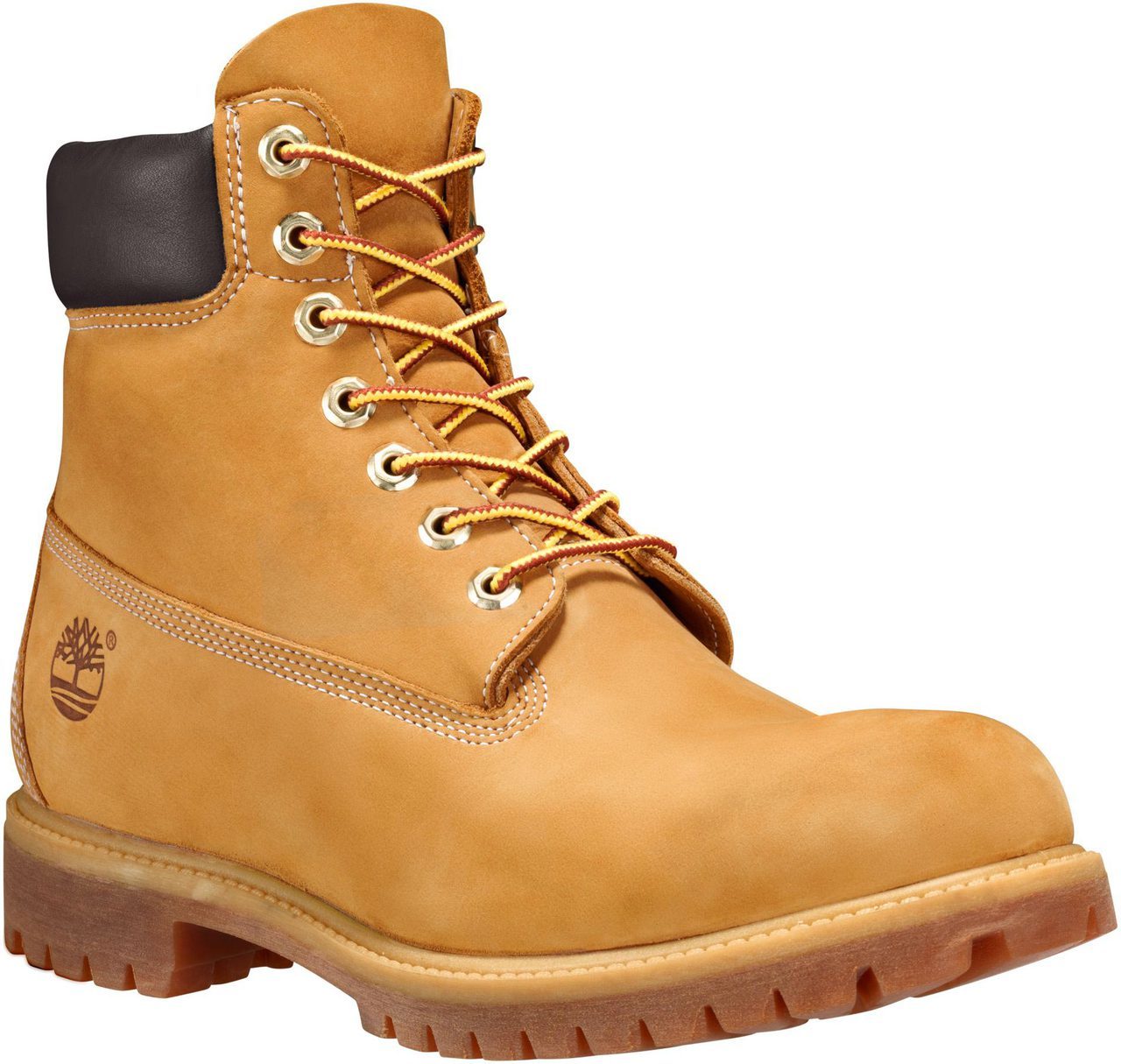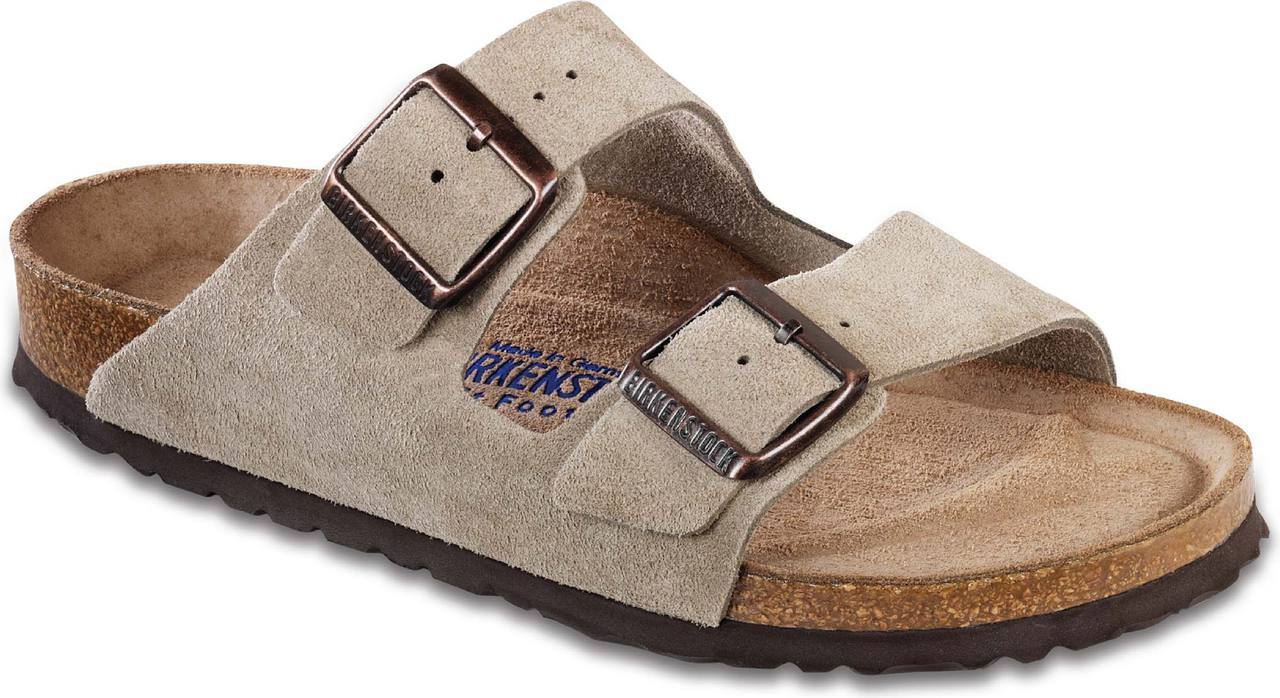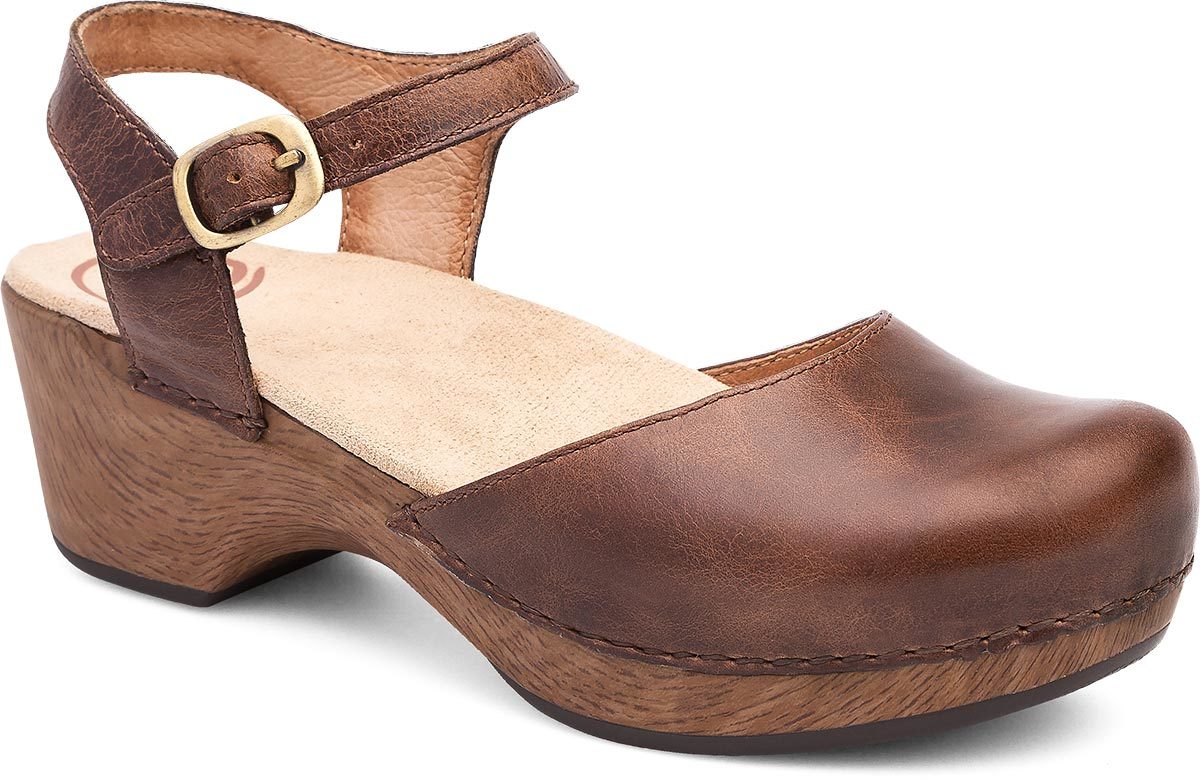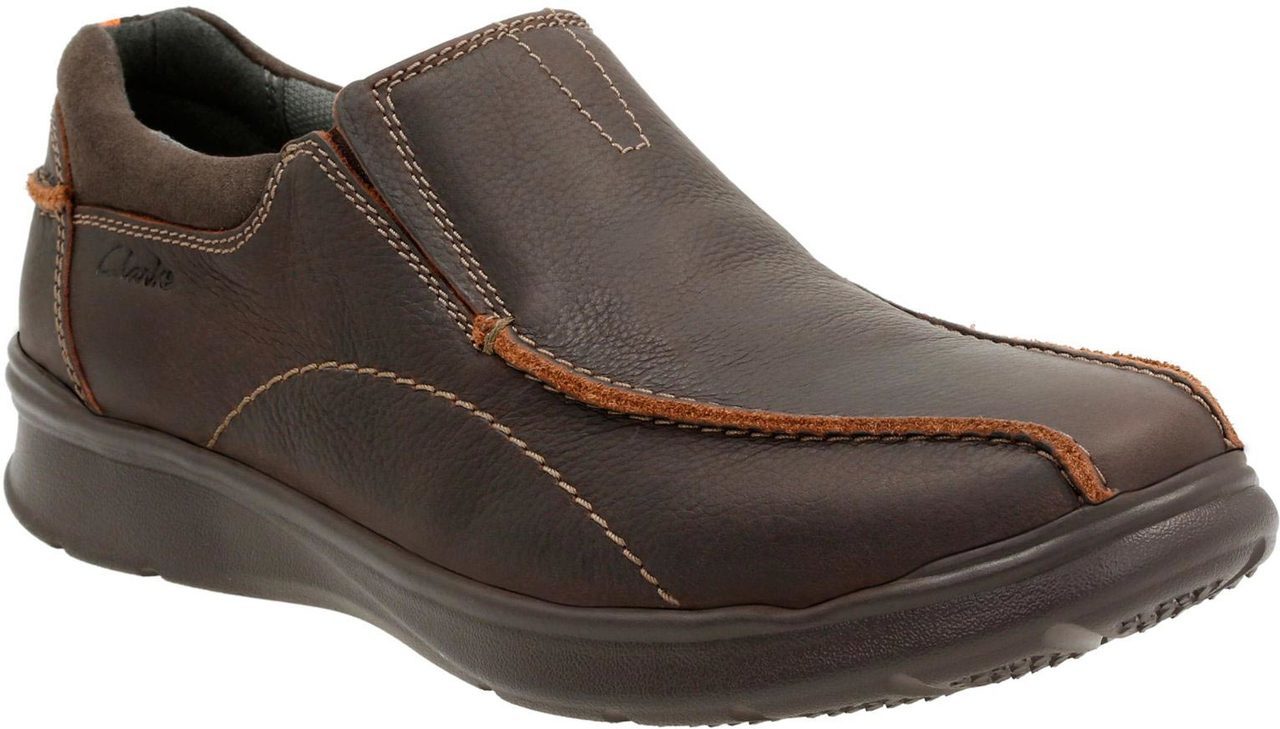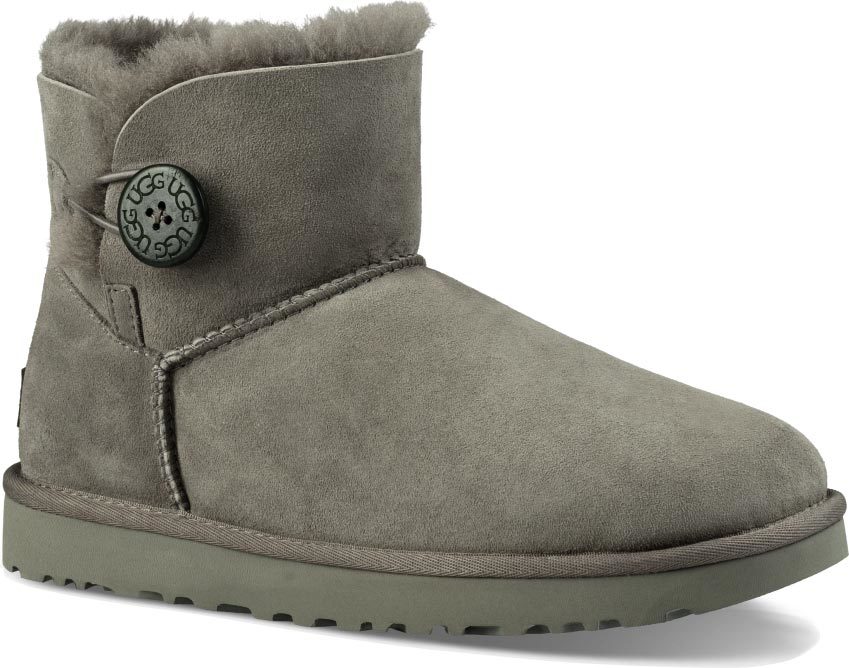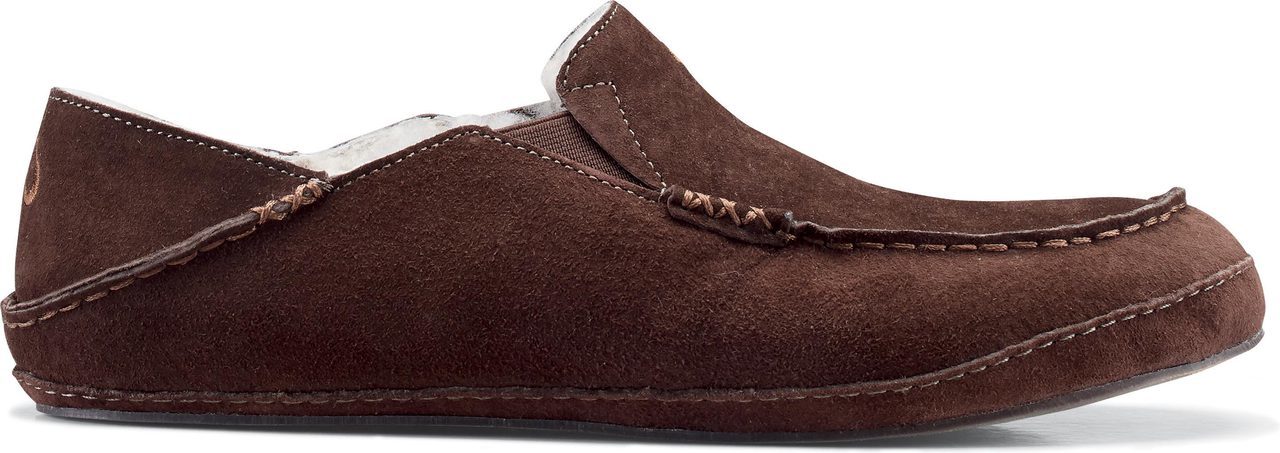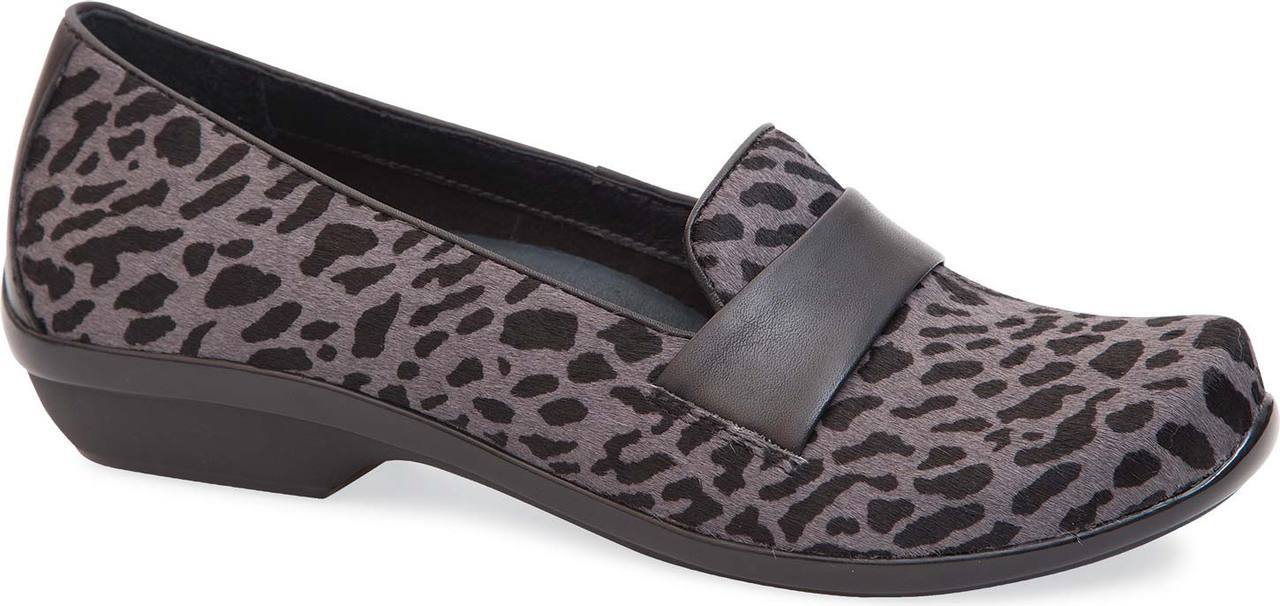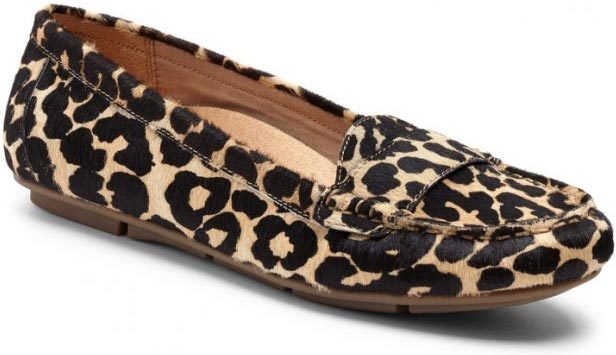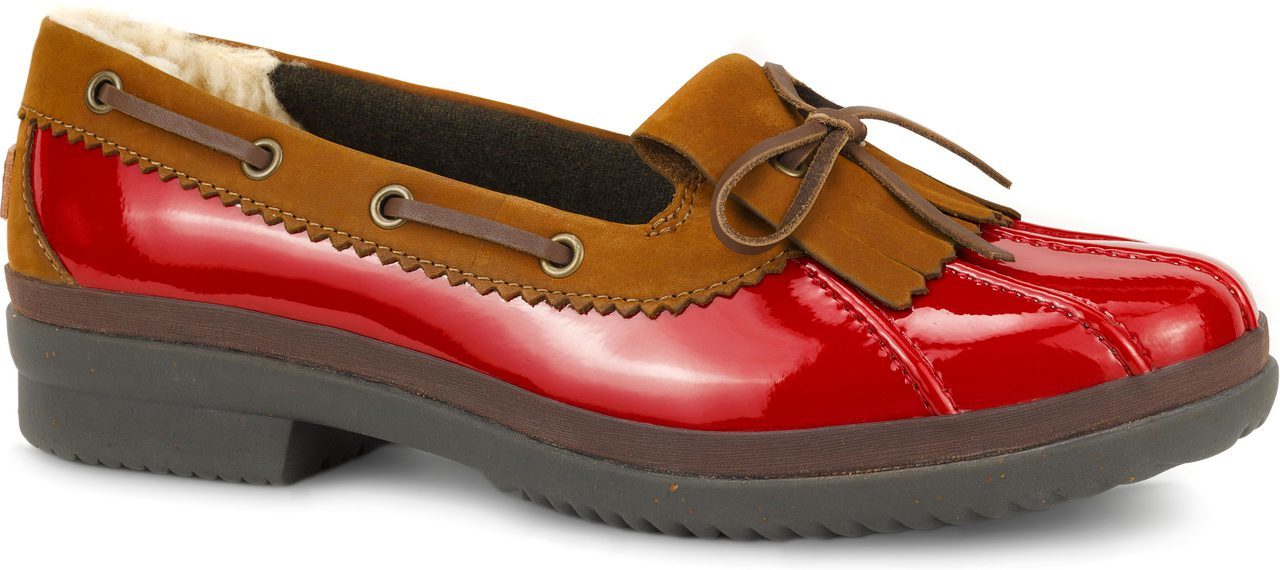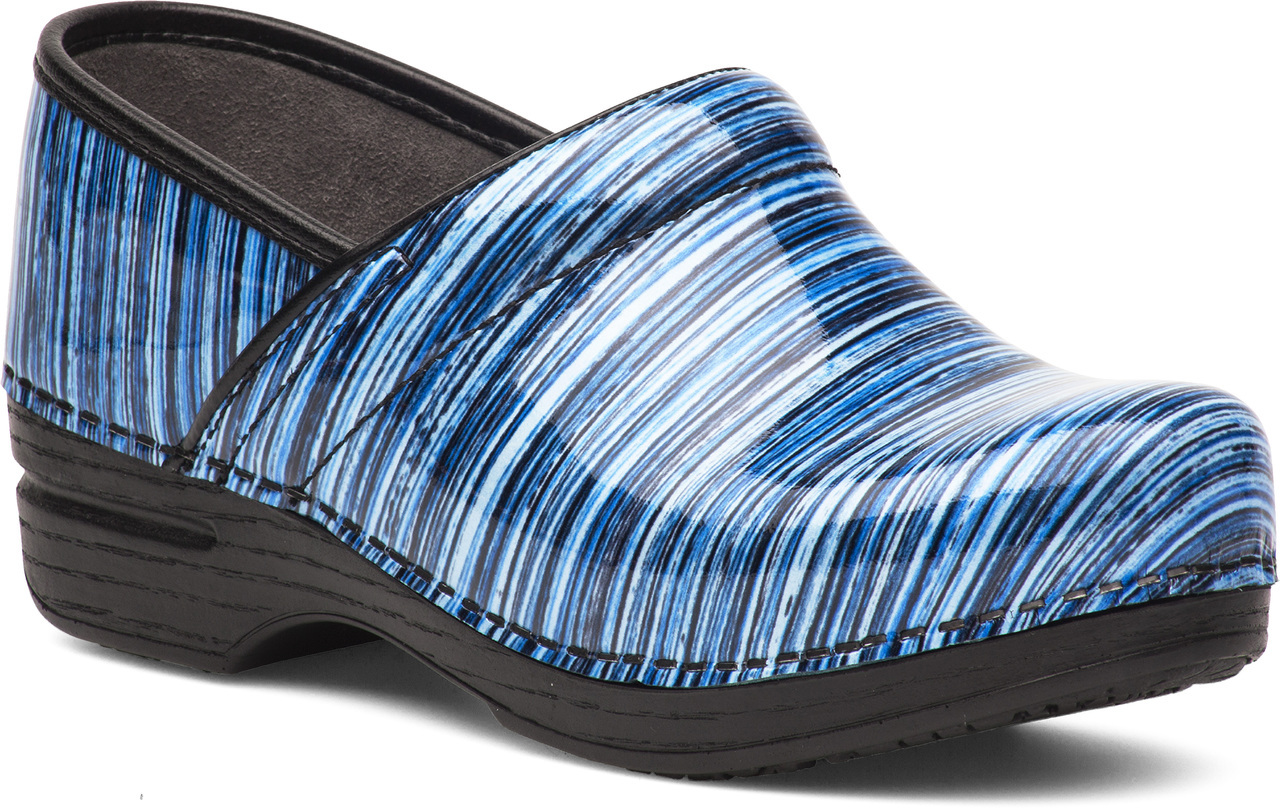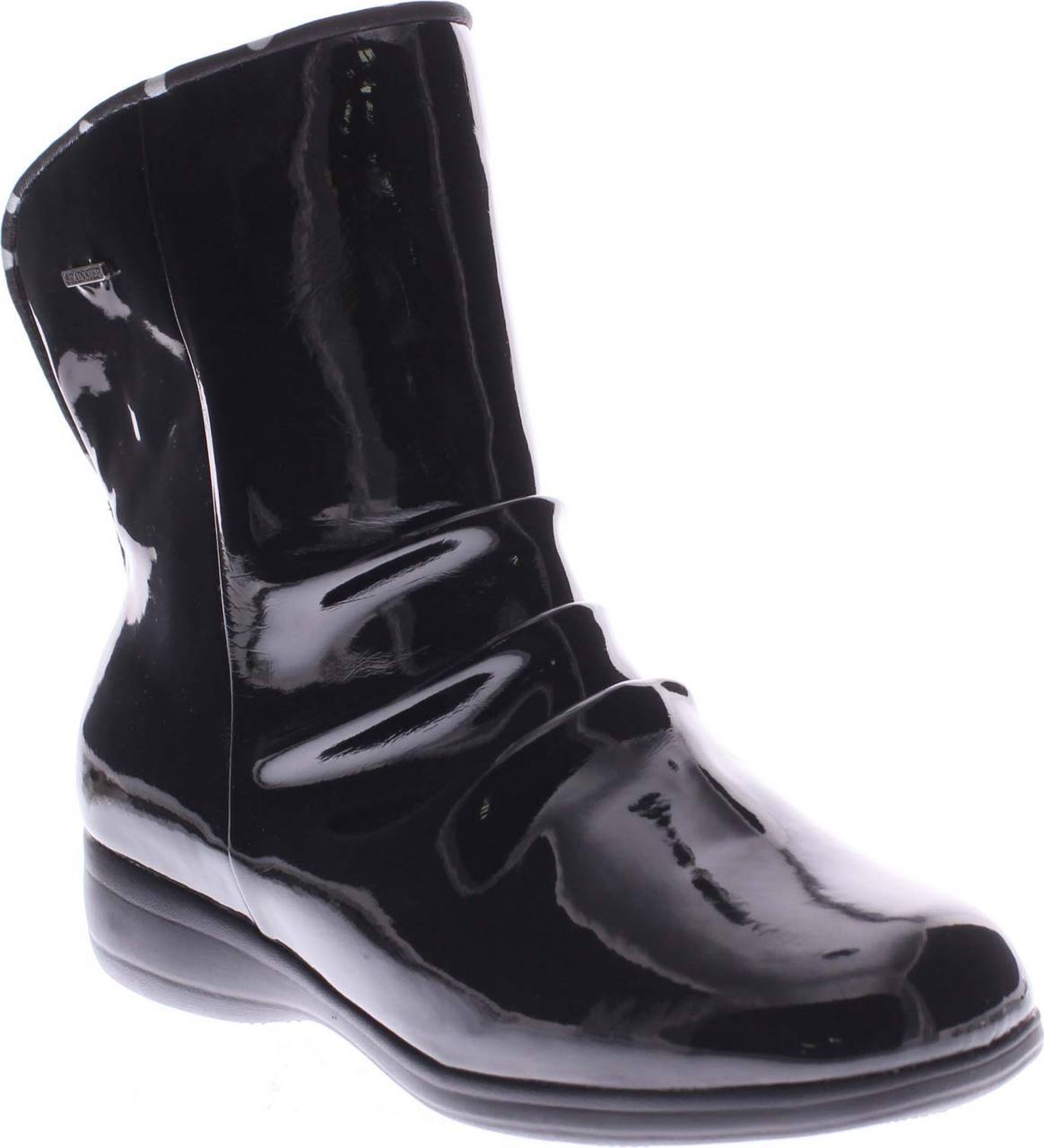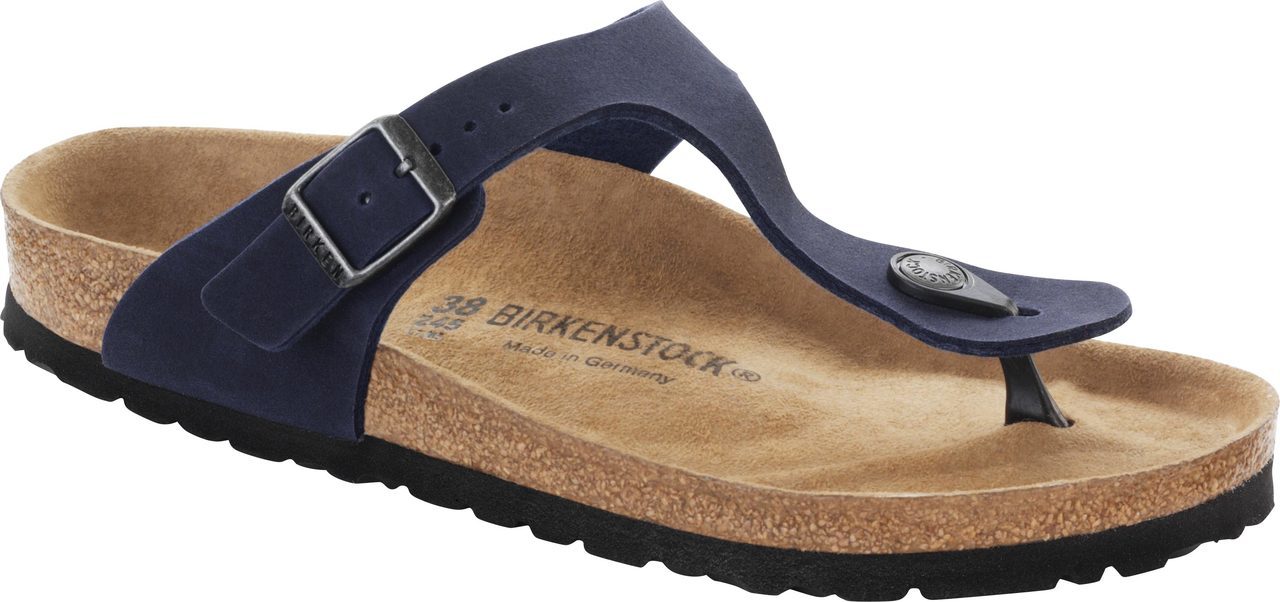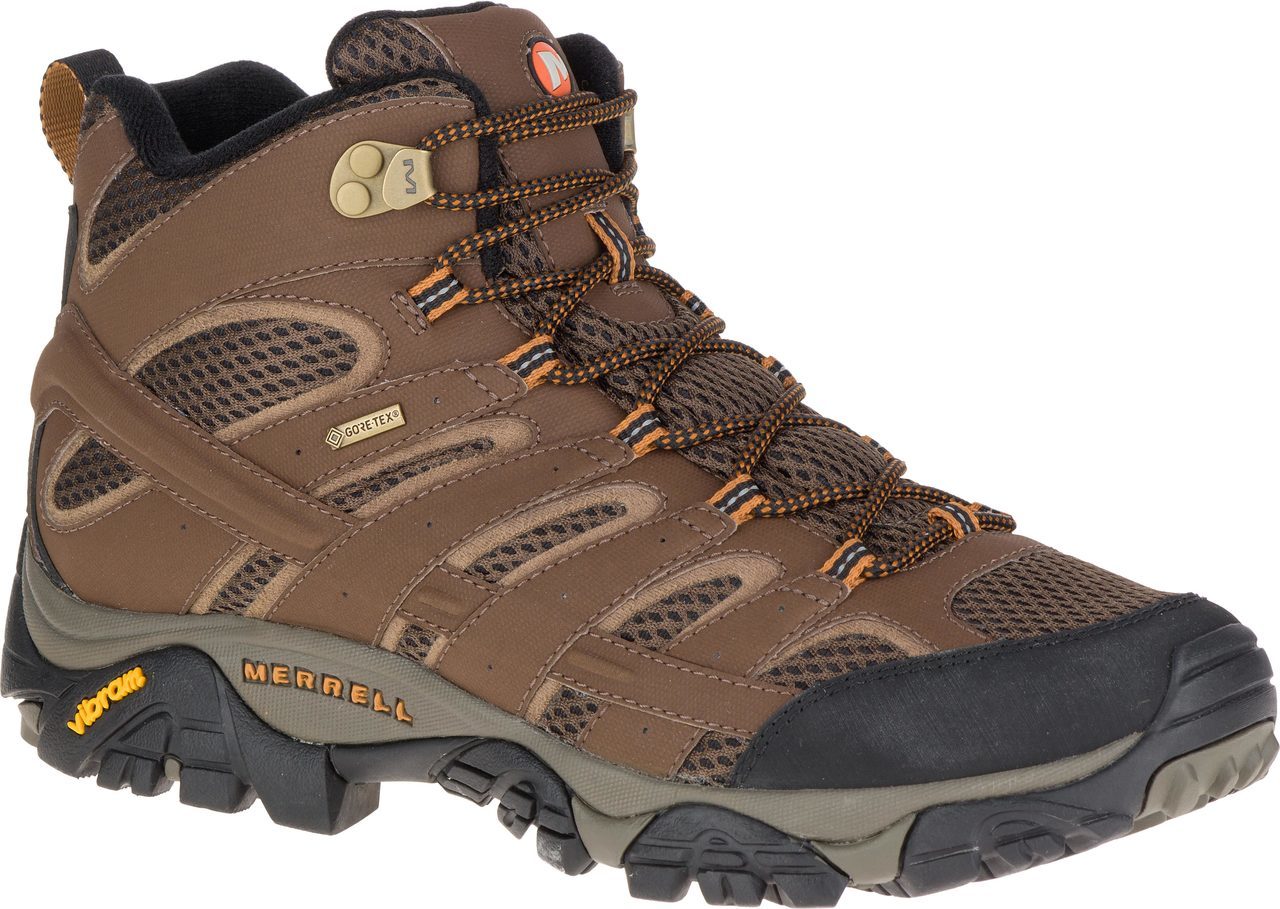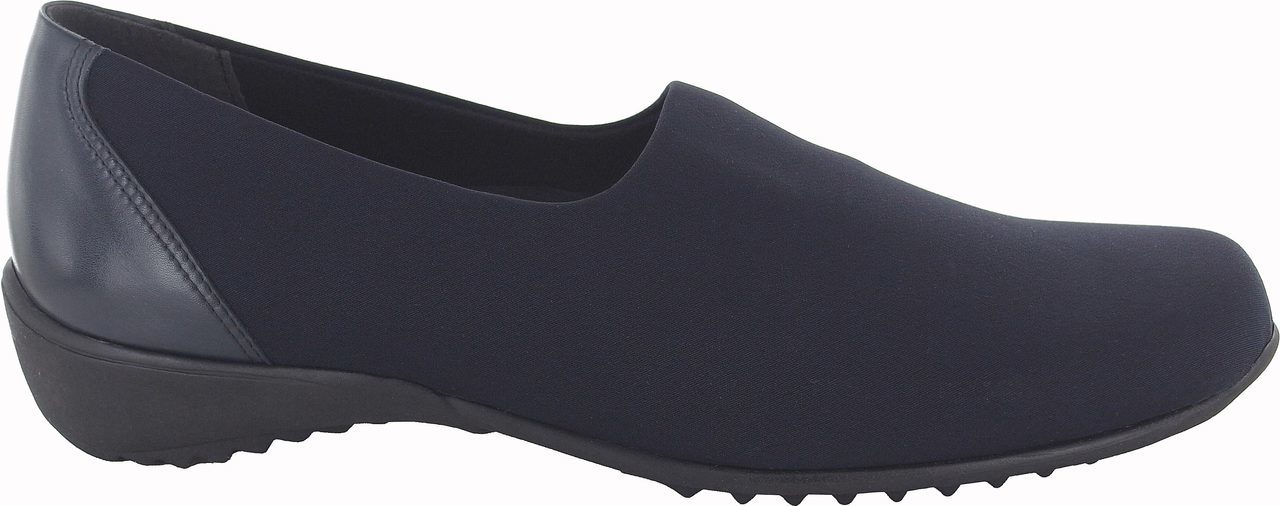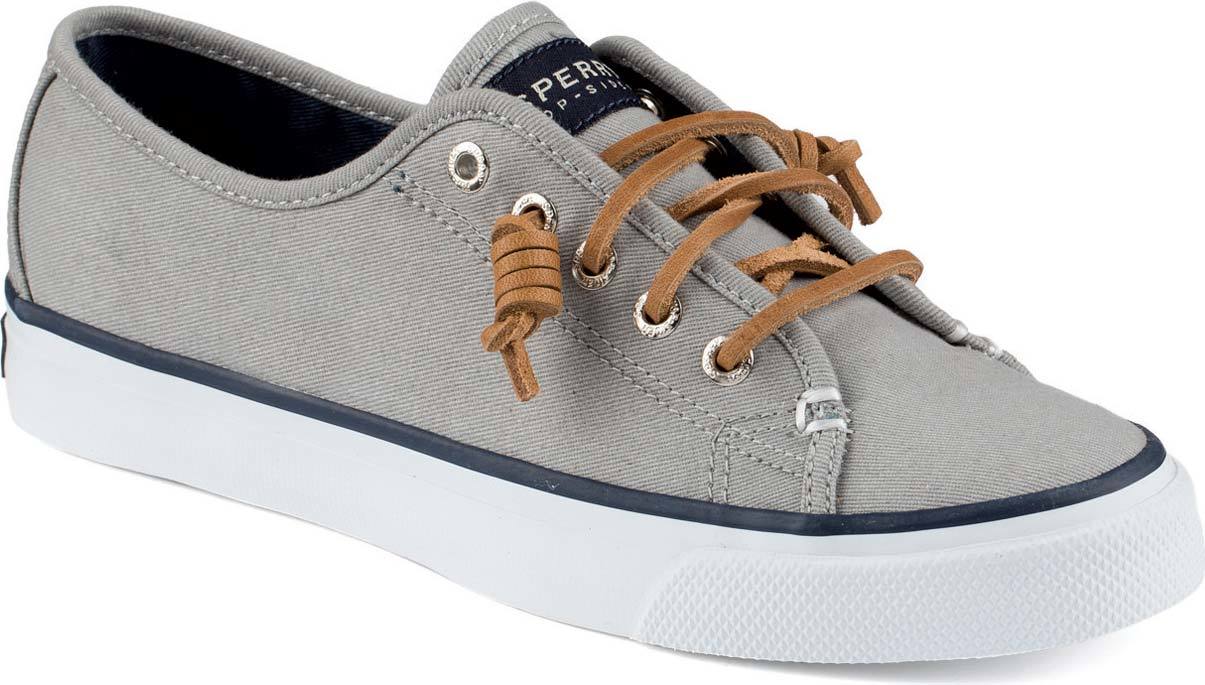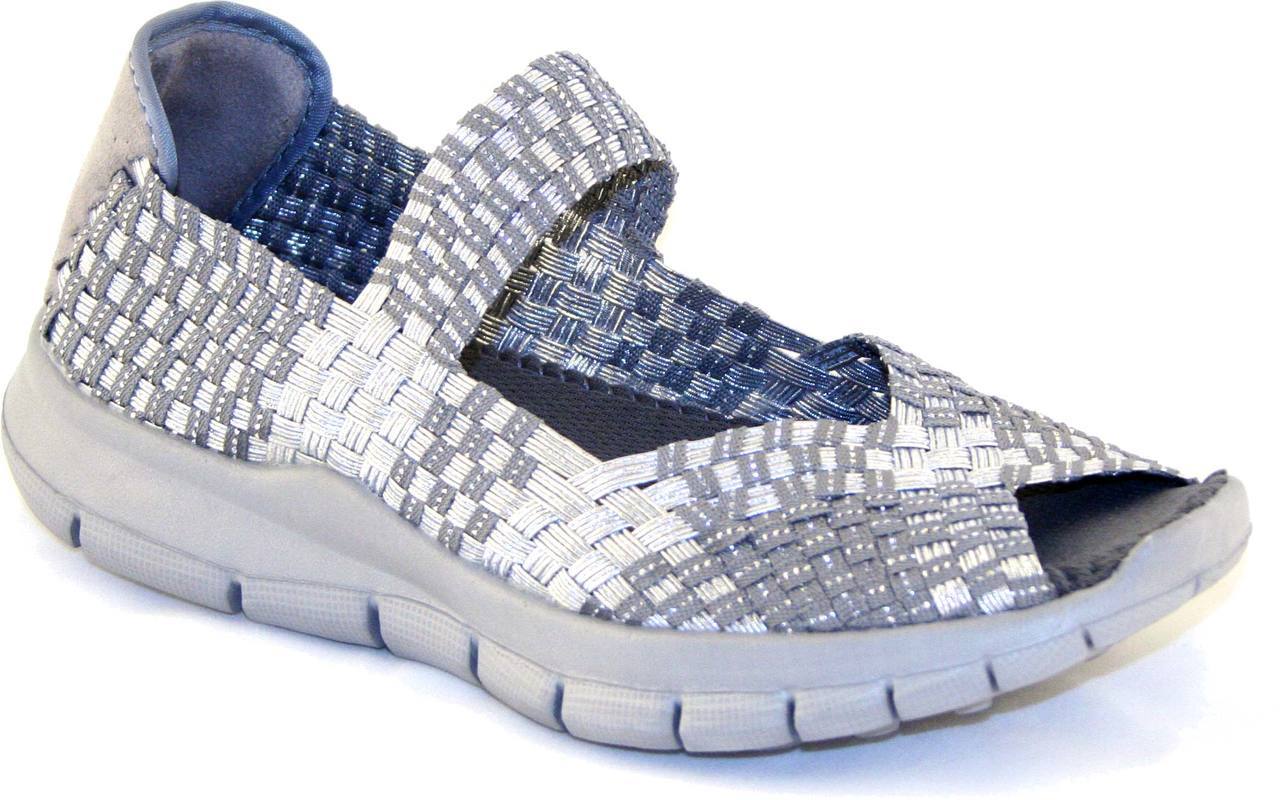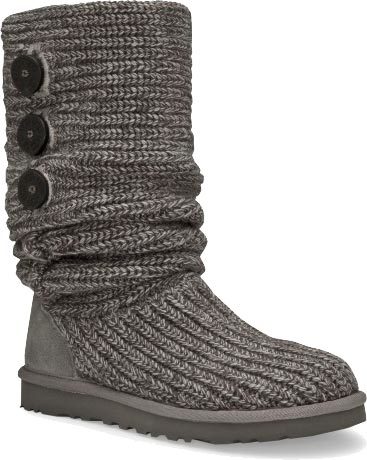
At Englin's Fine Footwear, we're about more than just selling great shoes. We want our relationships with our customers to continue long after you buy those cute pumps or sturdy work boots, and we want our shoes to serve you well for as long as possible! We always encourage our customers to take good care of their shoes so that the shoes can take good care of their feet. Very soon, we'll be offering a variety of shoe care products on our website to help you keep your shoes in beautiful shape. Our knowledgeable employees are always happy to answer whatever questions you may have about taking care of your new shoes, but here are some basics to get you started!
Quick Care Tips
- Rotate out your
shoes. Wearing the same pair of shoes constantly will wear out the soles,
weather the uppers, and cause moisture buildup and unpleasant odors on the
inside. You don't need a different pair of shoes for every day of the week, but
having two or three that you can switch between will give them all a chance to
air out regularly.
- The best way to dry out wet shoes is at normal room temperature. Do not attempt to dry
or store your shoes near a heater. This will dry out the leather, and could
eventually cause it to crack. It could also damage the adhesives that hold your
shoes together.
- Cedar shoe trees
will absorb moisture and help shoes keep their shape while in storage. Shoe
trees are especially essential for keeping your best dress shoes in tiptop
condition. Other types of shoe trees will also work, but cedar ones will
help control foot odor to some degree. If you're working with strappy sandals
that won't hold a shoe tree well, try stuffing them with newspaper or even the
tissue paper that comes in your shoebox. For tall boots, you can purchase boot
shapers, but some DIY options work as well, such as sections of pool noodles,
tall water bottles, or long handsewn pillows.
- Use a shoe horn
to put your shoes on whenever possible. This will keep the heel counter from
breaking down and losing its shape. Using this simple tool is easy: Loosen your
laces, lay the shoehorn against the heel counter, insert the front of your foot
into the shoe, and slide your heel along the shoehorn until your whole foot is
in the shoe. Such a small, nearly effortless way to add to the life of your
shoes!
- Similarly, you should be careful about how you take your shoes off. Never step on the
heel counter with the opposite foot to push them off! Always loosen the laces,
straps, buckles, etc. and pull them off gently, preferably with both hands.
- In general, there's no reason not to waterproof your shoes, and plenty of reasons why you should take this basic care step. Water damage can ruin any type of shoe, so don't let your high-quality dress shoes fall victim to this easily preventable problem. There are many ways to go about weatherproofing your shoes, but we've found that the fastest, easiest, and most reliable method is to use a spray-on water protectant. For shoes that you wear regularly, you'll want to reapply the waterproofing once every other month. KEEP IN MIND: Waterproofing products will make your shoes resistant to water and stains, but not impermeable. Heavy rain, puddles, etc. can still soak into most shoes, so trust common sense and the forecast as you choose which shoes to wear. Check out Shoe Care Basics, Part 2 for detailed instructions on how to waterproof your shoes!
Shoe Cleaning Basics by Material
Now you know how to give your shoes a little preventative care, but what about those inevitable scuffs, stains, and smears? The answer is going to vary widely depending on what type of shoe you're cleaning: Is it a white leather-and-mesh sneaker? A suede loafer? A sheepskin boot? If you're not sure what material your shoe is made from, check out the descriptions below, or bring your shoes in to your nearest Englin's to find out for sure!
Across all types of shoes, there are some techniques and considerations that will universally apply:
- You'll want to remove the laces before you start any deep
cleaning or polishing. This makes cleaning easier and protects the laces from
staining. (Check out Part 2 for instructions on how to clean your laces!)
- Slip in your shoe trees or stuff the shoes with newspaper
to help them
hold their shape during cleaning.
- Always use the gentlest tools and products possible for the
job at hand. Some useful tools to have in your arsenal include
horsehair
brushes, leather conditioner, shoe cream and polish, and a chamois or other soft
cloth
for calfskin/full-grain leather, and for suede, a good suede shampoo, a
suede "eraser," and a suede brush.
- If possible, when using any type of chemical or liquid,
test it on a small, inconspicuous area of the material first before applying it
to the entire shoe. This will help ensure that the product does not damage or
discolor your shoes.
- Make a habit of giving your shoes a quick mini-cleaning
with a horsehair brush when you get home at the end of the day. This helps keep
gunk from accumulating in the nooks and crannies of your shoe.
- For salt stains, a little vinegar works wonders. Mix one
part vinegar with two parts water and scrub the stains with a cloth or brush
and a small amount of the vinegar mixture.
- One product that we recommend, sell in our stores, and will soon be offering online is Dr. Martens Wonder Balsam. This powerhouse leather conditioner/protectant will have your shoes looking great in no time! Keep your eyes open for this product in our online store, and we'll update here when it becomes available.
Below, we'll be covering how to identify a variety of materials and give them a basic cleaning. Stay tuned for Shoe Care Basics, Part 2 to learn the next step for leather shoes: shine and polish!
CALFSKIN & KIDSKIN/FULL-GRAIN/NAPPA LEATHER
Characteristics: Most shoes are crafted from some type of leather, and most leather shoes are either calfskin (young cow) or kidskin (young goat). Calfskin and kidskin are typically very smooth leathers with a soft sheen, making them a favorite for dress shoes and casual shoes alike. Full-grain leather is commonly used for high quality shoes of a variety of styles, and the term refers to the section of the hide that is used. Full-grain leather includes the top layer of the hide, just beneath the hair, which makes full-grain leather the strongest, most durable, and typically most desirable type of leather. Nappa leather is a bit of a catch-all term for soft, smooth, chrome-tanned full-grain leather from any source.
Men's Johnston & Murphy Conard Wingtip in Black Italian Calfskin, Women's Munro Emma in Black Kid Leather
Women's UGG Thames Seaweed Perf in Suntan (Full-Grain Leather), Women's Dansko Louise in Stone Burnished Nappa
Cleaning: For the most part, these types of smooth leathers can be cleaned with a horsehair brush and/or a damp (not soaking wet) cloth. Use a circular scrubbing motion for the worst spots. A damp cotton swab can be used to clean out narrow crevices. For more persistent stains, you may need to use an actual leather cleaning product, but these chemicals can dry out leather, so use sparingly (and don't forget to wipe the cleaner off with a damp cloth after scrubbing).
After you've wiped down your shoes, brush once more to remove any stray fibers or residue, then allow them to dry. Your next step is to apply a leather conditioner. Follow the instructions on the product carefully so as not to use too much or too little. Gently rub the conditioner all over the surface of the leather and into all the nooks and crannies. Wipe away excess conditioner when you're finished, and allow your shoes to sit and soak up the conditioner for a while before wearing them. Don't forget to read how often the conditioner's directions suggest reapplication (usually around once a month), and maintain your shoes accordingly.
SUEDE & NUBUCK
Characteristics: Suede and nubuck leathers are characterized by their "nap," the tiny, soft fibers that can be seen and felt on the leather's surface. This nap makes suede and nubuck shoes velvety to the touch. The nap is created by sanding the leather as it's prepared. What's the difference between suede and nubuck? Nubuck is sanded on the outer surface of the hide, while suede is sanded on the inner surface. This means that nubuck is often tougher, but suede is incredibly soft. For this reason, suede is often used not just for shoe uppers, but for linings as well.
Women's Munro Whitney in Wine Suede, Men's Timberland 6-Inch Premium in Wheat Nubuck, Unisex Birkenstock Arizona Soft Footbed in Taupe Suede
Cleaning: Suede and nubuck are a bit trickier than most materials when it comes to proper cleaning, and they're very easy to damage and disfigure if not well cared for. First, use a suede brush to remove surface debris. Make sure to brush in one direction (with, not against, the nap) rather than back and forth. For tough grime and stains, try a suede eraser, which works just like a pencil eraser. It's okay to use a damp cloth if absolutely necessary, but always be careful introducing moisture to suede. Once you're done cleaning (and the suede is dry), you might need to brush the shoe with a wire suede brush to "fluff" the nap and restore its natural texture.
If your suede shoes become accidentally saturated (as from rain), it's important to let them dry out properly. Blot and then stuff the shoes with a small towel or absorbent paper. Again, don't use a heater to dry out any type of leather!
PULL-UP, OILED, & WAXED LEATHER
Characteristics: Pull-up leather is a certain type of leather that is deeply dyed and saturated with natural oils. It's called "pull-up" leather because it lightens when pulled or stretched, giving it a "distressed" look, or what we like to think of as character. Pull-up, oiled, and waxed leathers age beautifully, and have a natural, satiny waxed/oiled look.
Women's Dansko Sam in Teak Vintage Pull-Up and Men's Clarks Cotrell Step in Brown Oily Leather
Cleaning: These types of leather are very susceptible to scratching and can be damaged by scrubbing or getting them wet. Your best bet is to wipe any debris or spills away with a soft, dry cloth, then buff the leather back to its usual sheen with a fresh chamois. You can also condition pull-up leather, but it may not need it as often as full-grain.
SHEEPSKIN/SHEARLING
Characteristics: Sheepskin and shearling are two terms that are often used interchangeably, though shearling most accurately applies to the pelt of a sheep or lamb that has recently been shorn, giving the wool a uniform length; sheepskin is a broader term that applies to any sheep pelt. Unlike most leathers, sheepskin is cured and used with the fleece intact. Sheepskin is most commonly associated with UGG and their Classic boots. UGG uses Grade-A Twinface sheepskin, which is treated for ultimate softness on both sides of the hide.
Women's UGG Mini Bailey Button II in Grey, Women's UGG Classic Short II Neon in Chestnut, Men's OluKai Moloa Slipper in Dark Java
Cleaning: Cleaning the outside of sheepskin boots is similar to cleaning suede or nubuck. However, if you use a damp cloth or have gotten the boots wet, it's a good idea to evenly dampen (not soak) the entire surface of the boot with your cloth in order to prevent water stains or streaking. The new UGG Classics are pretreated against water and stains, but it's a good idea to freshen up this treatment regularly and to use a water protectant on any other sheepskin footwear. You can wipe down the inside with a damp cloth as well, but there are also products made specifically for freshening and deodorizing the fluffy interior. As always, make sure to let the boot dry inside and out before wear.
HAIRCALF
Characteristics: Also called "pony hair" in the fashion industry although it isn't made from ponies, haircalf is a type of leather that's easily identified by the smooth, glossy hair that remains attached to the skin. The hair is chrome-tanned for shine, cut to a uniform length, and typically dyed, often to imitate exotic animal prints such as leopard or zebra. Haircalf offers an intriguing alternative to more common leathers.
Women's Dansko Oksana in Grey Cheetah Hair Calf and Women's Vionic Larrun in Tan Leopard Haircalf
Cleaning: Haircalf is a very delicate material that's unfortunately easy to ruin. One of the best preventative steps you can take is to avoid allowing anything to rub against your haircalf shoes, such as the hemline of jeans or dresses. Rubbing haircalf can cause the hairs to fall out, leaving unsightly bald patches. If your haircalf shoes get dirty, the best thing you can do is be very gentle. Try a soft, dry cloth, always cleaning in the direction that the hair naturally lies. If that doesn't work, slightly dampen the cloth, or very carefully use a small brush (such as a cat slicker brush) to dislodge stubborn debris.
PATENT LEATHER
Characteristics: Patent leather is known for its uniform, high-gloss shine. It's treated with special chemicals and, in modern times, typically coated with plastic/polyurethane to bring it to a reflective finish. Slick and sophisticated, patent leather is often reserved for formal dress shoes like oxfords and pumps, but its appealing mirror shine has made it popular for more casual shoes in recent years.
Women's UGG Haylie in Red Patent, Women's Dansko Pro XP in Blue Stripe Patent Leather, Women's Flexus Candyapple in Black Patent
Cleaning: A special concern with patent leather is scuffing. These unsightly marks are hard to avoid if you wear your patent leather shoes regularly, but luckily, most are easy to remove. Clean your patent leather shoes using the same method that you would use for calfskin/full-grain. For the most stubborn scuffs, a bit of petroleum jelly, mineral oil, or nail polish remover on a cotton swab may do the trick— just be cautious when using anything that isn't specifically made for shoes, and always try a genuine leather cleaner first.
SYNTHETIC LEATHER
Characteristics: Some brands use synthetic leather as a weather-resistant or vegan alternative to real leather. One notable example is Birkenstock, a company that offers "Birko-Flor" (synthetic leather), "Birkibuc" (synthetic nubuck), and vegan leather uppers alongside their real leather options.
Women's OluKai Ohana in Lemon Grass/Black, Women's Birkenstock Gizeh Vegan in Navy Microfiber, Men's Merrell Moab 2 Mid GORE-TEX in Earth.
Cleaning: Oftentimes, synthetic leather is less permeable than real leather and somewhat easier to clean. Your specific cleaning method should depend on the actual material at hand, whether it's vinyl, coated polyester, microfiber, or something else, but in general, a damp cloth should suffice for surface debris.
FABRIC, KNIT, MESH, & CANVAS
Characteristics: Of course, not all shoes are made from leather. Many sneakers and hiking shoes are at least partially mesh, boat shoes are often made of canvas, and some boots feature warm knit wool. You might have fabric flats or loafers with panels of elastic goring.
Women's Munro Traveler in Navy Stretch Fabric, Women's Sperry Seacoast Canvas in Light Charcoal Burnished Canvas
Bernie Mev Comfi in Silver/Grey (Woven Elastic), UGG Classic Cardy II in Grey
Cleaning: Cleaning depends on the exact type of material, but most fabric and canvas can handle less delicate treatment than your fine leather shoes. A bit of soap, water, and elbow grease can usually eradicate most messes from these materials. Some shoes can be washed in a washing machine with a small amount of detergent, but ALWAYS check the tag to make sure this is an option before you try it. If you're not sure, stick with hand-washing. As with leather, make sure to let your shoes dry naturally, not with a heater, direct sunlight, or a clothes dryer.
Did you find these shoe cleaning tips helpful? What are some questions you still have about how to care for your shoes? Tune in for the next blog in the series to learn about waterproofing, shining and polishing, fighting stains and odors, and more!

